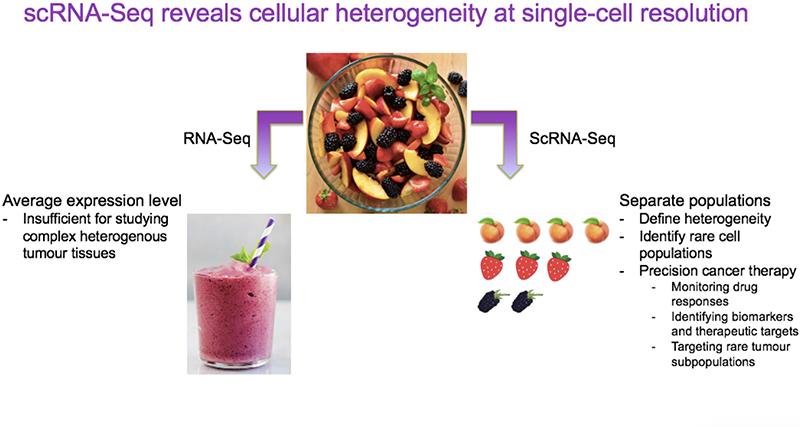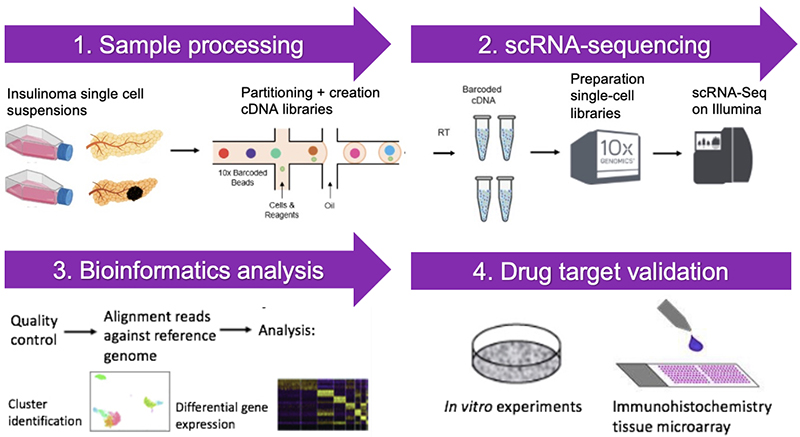
Identification of novel druggable targets in canine insulinoma through single-cell transcriptomic analysis
Insulinomas in dogs are difficult to cure by surgery. We investigate which genes are crucial for survival of insulinoma cells, allowing us to design new treatments targeted at these genes.

Challenge
Insulinomas are the most common pancreatic neuroendocrine tumours in dogs and humans. Current treatment options are limited to surgery and palliative medical therapy. Survival is poor with a median of 4 [range 0-18] months and 14 [range 0-51] months for medically and surgically treated dogs, respectively. Hence, new, more precise treatments are needed to improve the clinical outcome for dogs and humans with malignant insulinomas.
Solution
Very little is understood about driving factors and critical survival genes in insulinomas. The key aim of this project is to identify novel therapeutic targets in canine insulinoma through single-cell transcriptomic analysis (scRNA-Seq). scRNA-Seq allows detection of transcriptomic heterogeneity at single-cell resolution, facilitating the identification of novel druggable targets.
For this study we are using insulinoma cell lines and residual samples from freshly surgically resected canine insulinoma samples. Single cell suspensions are created from these samples and processed for scRNA-seq. Bioinformatics analysis will allow us to identify which genes are crucially important for survival of insulinoma cells. After validation of these genes we will be able to design new treatments targeted at these genes specifically.
Recent studies have validated the use of canine insulinomas as translational model for human malignant insulinomas. Therefore, the results from this study will also be important to further improve the treatment of human malignant insulinomas.
This is the first project ever using scRNA-Seq to analyse single-cell transcriptomics of insulinomas.

The insulinoma specialist surgeries and the laboratory work are being done by the same person.
Floryne Buishand is one of the very few Diplomates of the European College of Veterinary Surgery with a strong background in molecular research, making her uniquely positioned to conduct translational research bridging the border between clinical and basic research.
